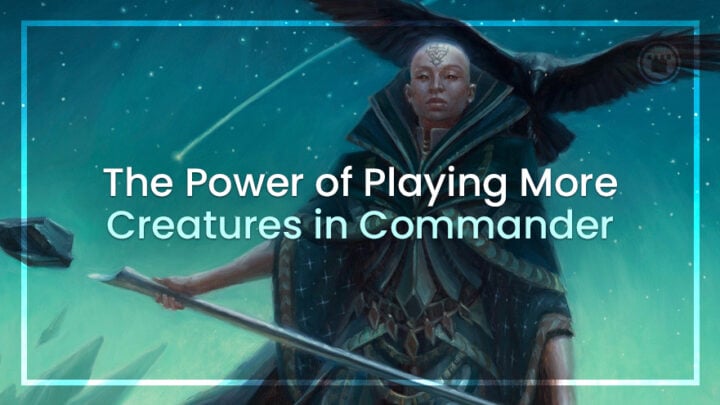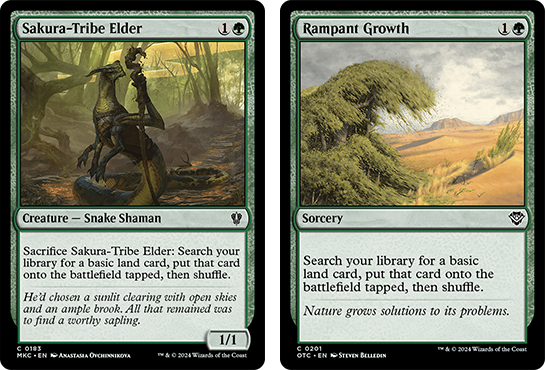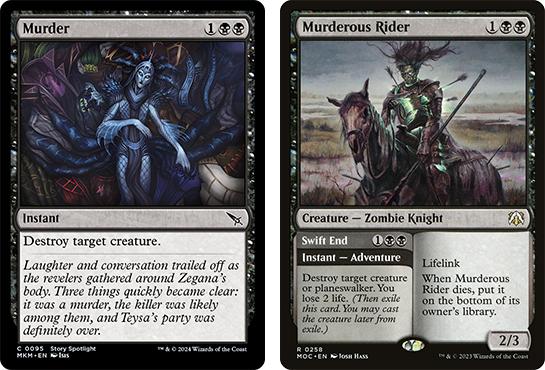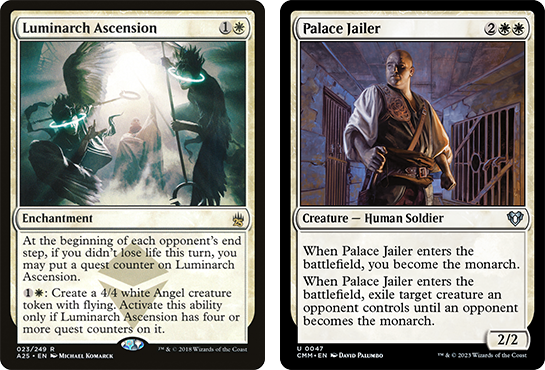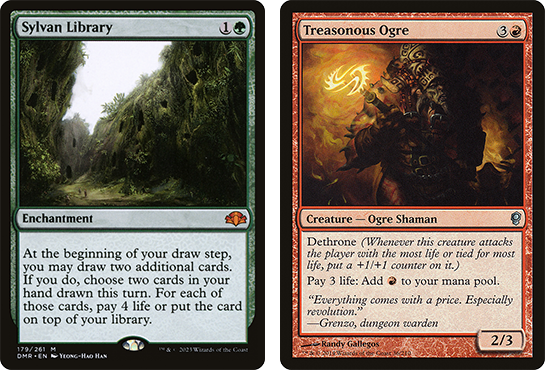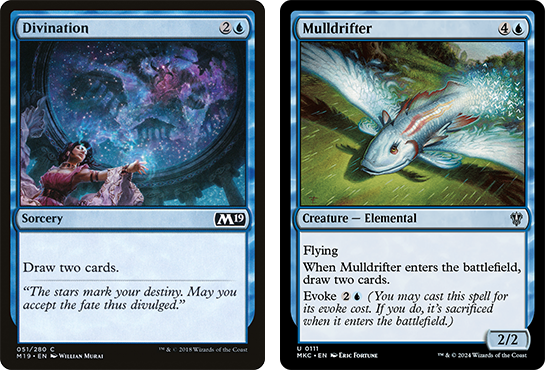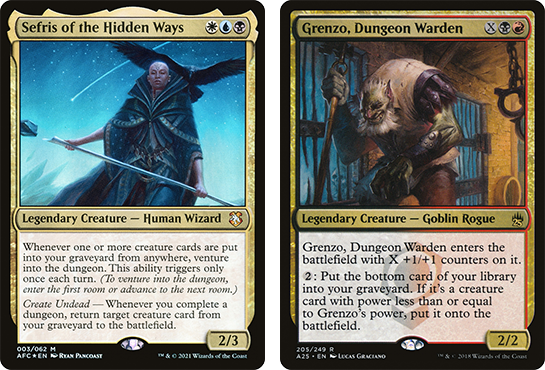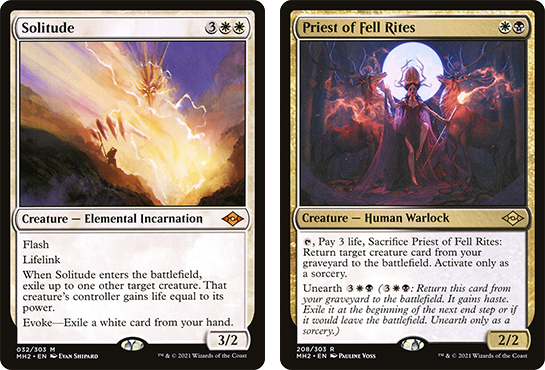Have you ever looked at your deck and thought “do I have too many creatures here”?
Unless you were playing way back when Shivan Dragon was the best threat available, the very idea of “too many creatures” probably sounds weird. The power and utility offered by creature cards has been steadily growing throughout Magic’s history, and expectations of their role in most archetypes has grown proportionately.
Now we’re at a point where creatures can and should be filling most of the slots in the average deck – and not just in aggro strategies! This is especially true of Commander, where the unique dynamic of multiplayer plays heavily to the strengths of creature cards. Unless you’re specifically building around a commander whose abilities support other card types, there’s little reason not to run creatures wherever you can find a good fit.
ANY BODY WILL DO
In my experience, the logic of Commander deckbuilding evaluates cards for their rules text much more than their card type. The singleton rule makes it natural to lump Sakura-Tribe Elder in with Rampant Growth, or Murder with Murderous Rider; if there’s an effect your deck wants it probably wants more than one copy, and in most cases sticking power and toughness on the card won’t impact that desired area of performance.
Where it DOES have an impact is… well, every other gameplay situation the card could be involved in. Creatures are Magic’s ultimate strategic resource, offering massive utility even compared to other permanents: they can attack, block, be sacrificed, hold enchantments and equipment, tap to pay for costs, provide a target for friendly effects, and so on.
Combat is the most obvious point of difference for creatures, and the most significant. While incidental combat damage isn’t the existential threat in 40 life multiplayer that it is in Limited or Constructed, “combat damage to a player” has long been used to balance the highest-impact triggered abilities. It’s essential to at least have blockers around from early in the game, lest you become the soft target that the stronger players farm for easy value.
Getting viable attackers on your board is also a great boon – if not to be your first choice win condition, then to apply pressure to opposing value engines. Planeswalker cards are the #1 target for such harassment, but this also applies to the Monarch and Initiative emblems, as well as a few other cards like Luminarch Ascension.
It’s also a mistake to completely discount the strategic value of combat damage, even if you’re a long way off actually threatening lethal. Every hit depletes the available fuel for Commander staples like Ad Nauseam, Sylvan Library and Treasonous Ogre.
More generally, wearing down someone’s life total places growing restrictions on what plays they can make and how efficiently they can execute their plans. Sure, they can usually stop the bleeding with blockers or removal. But that still means they’re spending finite resources – spells, mana, creatures – to stop your pressure instead of something productive.
So long as you have the life lead, they’re the ones who have to fear and block a potential trade, while you can go on using your creatures for something else. The sheer number of ways you can use a creature within a single game already gives you a huge reason to prefer them over non-creature equivalents. But far from the only one.
A VALUABLE COMMODITY
Leveraging combat at every opportunity effectively gives every creature a zero-mana tap ability, a way to continue generating free additional value beyond the effect they were originally included for.
I’ve written many times on this blog about the need for this kind of “greedy” play in multiplayer Commander. Spending resources to slow down one opponent also slows you down relative to everyone else at the table, but spending them to accelerate towards your wincon – assuming it’s an instant-win combo – puts you ahead relative to all of those players.
That metagame imperative to scale up your resources and snowball towards victory goes deeper than just ramping mana in the early turns. It emphasizes the uncapped potential of a permanent over the (mostly) fixed outcome of an instant or sorcery. Creatures are just the permanent type which has the most opportunity to impact the game over time, and thus the most valuable upgrade you could add to most sorceries is a 2/2 body.
But as nice as it is to generate an incidental army from spells you would be casting anyway, creature combat and tap abilities are still restricted by the number of untap steps you get with them. This is where we see the enormous importance of triggered and static abilities to the Commander metagame: they offer an uncapped source of extra value which piggybacks off effects you’ve already paid for, vastly improving overall efficiency.
Once again, creatures lead the way in generating opportunities for this kind of value explosion. Technically, any type of permanent can benefit from flickering, reanimation and copying spells which recur their ETB effects at far less than original mana cost. But the options for creatures are far, far more numerous and powerful.
By staying in play as a permanent, being involved in every phase game and having such a broad range of uses, creatures provide the essential raw materials that this alchemy of triggers needs to produce gold.
NO FLASH IN THE PAN
I realize that, at least for some readers, I might not be saying anything new. Efficient utility creatures like Sakura-Tribe Elder and Mulldrifter have been popular staples for as long as they’ve existed, in large part because of how easily they can utilize recursion and the free equity they generate in the combat step.
But if the superiority of creature cards is so well understood, why aren’t more decklists made up of just lands and creatures?
Yes, there was a time when that would have been an unrealistic goal, or at least lead to a deck with very limited gameplay patterns. No serious Commander deck can afford to play at sorcery speed the whole game, no matter how well the ETB effects on your creatures are positioned in the matchup. But times change quickly, especially in the last half-decade of Magic design. By now we have tons of mechanics that help creature cards fit into those last few slots.
Evoke, channel, bloodrush and most of all adventures turn big creatures into efficient utility spells. If you’re still worried about timing restrictions, you can run commanders like Yeva or Teferi to grant everything flash – or just reserve that last handful of spots for the crème de la crème of non-creature interaction as a safety blanket.
I hadn’t truly realized how far these ideas could be pushed until I started building commanders like Sefris of the Hidden Ways and Grenzo, Dungeon Warden. Since their abilities essentially scale with the total number of creature cards in your deck, scheming up new ways to chip away and replace the remaining noncreature spells became a minor obsession.
Neither deck can rely on green creatures to supply much-needed ramp. But the red-black deck can at least play treasure token generators (all creatures, of course) to fill those slots. Sefris, meanwhile, gets by without any conventional ramp spells, instead bringing in a bunch of Merfolk Looter style creatures to help accelerate her dungeon triggers instead.
With the deck’s ability to generate massive value for free through reanimation and load up on landcyclers to secure land drops, a conventional source of mana ramp simply hasn’t proven necessary. After getting over that hump, it’s just a matter of replacing Swords with Solitude, Counterspell with Ertai Resurrected, and Dread Return with Priest of Fell Rites.
These decks obviously have an unusual incentive to go all-creatures all-the-way, compared to even creature-heavy typal decks I’ve previously encountered. But what I see is a proof of concept totally realized, a testament to how reasonable the all-creature list has become and how powerful it can be when built.
CREATURE COMFORT
Unlike some of the causes I’ve had to pull out my soapbox, I don’t think “play more creature cards” is going to be a hard sell for most of you readers. They’re the backbone of the game, not just in mechanical terms but as a locus of identity and aesthetics and lore which we learn to associate with the Magic brand.
If I’m right and creature cards become the optimal choice in non-land slots, I still don’t think it’s an apocalyptic scenario for the game, but it does seem to run against common assumptions about Magic’s balance and strategic variety. It’s mostly on those grounds that I’d be interested to see some small reversal of the trend; ideally, finding ways to support instants and sorceries beyond the typical UR spellslinger decks.
But while I’d be happy to see more balance, I’m not going to bet on it happening soon. After all, to do so would require pushing back against a thirty-year rise to prominence – one that has finally led creature cards to the very top of Magic’s metagame..

Tom’s fate was sealed in 7th grade when his friend lent him a pile of commons to play Magic. He quickly picked up Boros and Orzhov decks in Ravnica block and has remained a staunch white magician ever since. A fan of all Constructed formats, he enjoys studying the history of the tournament meta. He specializes in midrange decks, especially Death & Taxes and Martyr Proc. One day, he swears he will win an MCQ with Evershrike. Ask him how at @AWanderingBard, or watch him stream Magic at twitch.tv/TheWanderingBard.

